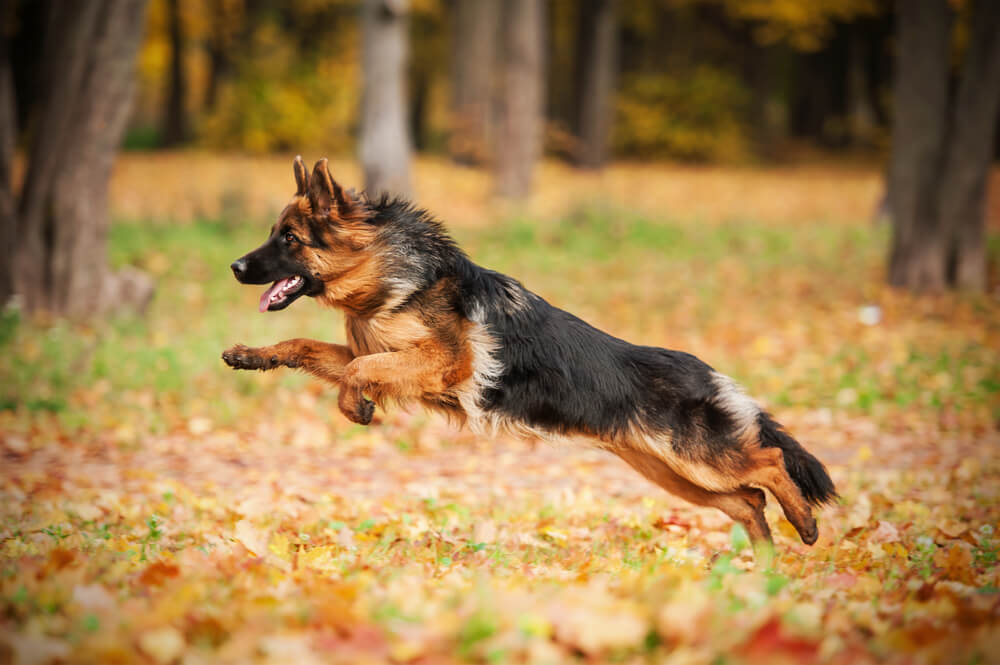News
Paw police; a day in the life of a pooch on patrol

Ever wondered what a police dog gets up to each day? If you’re curious about why police depend on our canine friends and what life looks like for a pooch on patrol, read on to find out all about a day in the life of a police dog…
What does a typical day look like for a police dog?
General patrol police dog handlers work a variety of shifts. These include early shifts (6/7 am to 2/3 pm) late shifts (2/3 pm to 10/11 pm) and night shifts (10/11 pm to 6/7 am). However, some police forces allow their dog handlers to work a seven hour shift, which gives them one hour to feed their dog(s) and clean the kennel.
Police dogs are very active and so they need a well-balanced diet to meet their increased energy and dietary needs. Foods that have a high percentage of meat, such as Meatiful sausages, are great for working dogs; they massively benefit from the extra protein as it helps with their energy levels.
Before each shift starts, handlers are required to feed their dog and allow plenty of time for their food to digest properly before starting their duties. This is very important – if dogs don’t have enough time for their food to digest before carrying out any strenuous exercise, it can lead to health complications. Once they have had enough time for their food to settle, police dog handlers will start their shift.
For each police dog the working day will look very different, depending on their area of specialism. General purpose police dogs can be used in search situations and help detect human scents from hundreds of yards away. Along with their handler, police dogs are able to navigate bushes and woodland much more quickly and efficiently than humans, saving lots of police time. They generally search for missing people, offenders and sometimes bits of evidence.
Tactical firearms dogs are highly trained to work with the firearms teams. A special camera is attached to the dog’s head, which allows the responding officers to see inside a building where they suspect a suspect might be hiding.
Cash dogs and drug detection dogs are both trained to find large amounts of money or drugs that a criminal may have hidden. As part of their duties, they are required to search vehicles, buildings and other open areas to find what they are looking for.
Explosives dogs are trained to detect explosive substances. They are often used at VIP events, like special visits from a member of the royal family or the Prime Minister. The trained police dog will search an area before the visit and the event will only go ahead if the handler thinks it’s safe to do so.
Victim detection/forensic evidence recovery dogs are able to detect human blood, human tissue, teeth, bones and other bodily fluids. They are used to find crime scenes and bodies that have been buried in shallow graves.
No matter the area of specialism, each police dog and their handler must remain flexible to meet the demands of the department and a degree of night training is always expected. Operations that take place at night include public order situations and rescue operations.
How are police dogs selected?
Certain breeds are selected for different specialisms. Breeds such as German Shepherds are often used as general-purpose police dogs, while Labradors and Spaniels are used for their scenting capabilities, like tracking down drugs, arms and explosives. Dobermans, Rottweilers and Weimaraners are also used by the police but not as often due to their stubborn temperament.
Selection procedures are usually quite rigorous for dogs in the police force. Dogs under consideration to be a police dog are monitored from day one to assess their physical, psychological and mental suitability for the work. Their response to different elements of training is considered at every stage, making sure the right man (or woman!) is selected for the job.
For some dogs, the psychological challenges may be too much to cope with. For others perhaps, the physical demands are too much. All police dogs must be keen, fit and able to fulfil the role for which they have been selected.
Where do police dogs live?
Police dogs tend to live with their handlers in the family home. Officers generally have two dogs but many have more, including puppies, who may be in training. Each handler must ensure that their dogs are appropriately disciplined and in peak physical condition. Being a police dog is more than just a job, it’s a vocation for life and the partnership between dog and dog handler lasts 24 hours a day, seven days a week.
What happens when a police dog retires?
A typical working life for a dog on the force is 7 years and then they enjoy a long retirement. Once retired, the dog normally stays with their handler as they are likely to have formed an unbreakable bond over the years. They then become an ordinary pooch, enjoying family time and some much needed rest.
Some retired police dogs are rehomed with an adopted family who will give them all the love and affection they need after a successful career in the force.
Are you a police dog handler or know someone who is? Connect with us on social media to tell us more.
